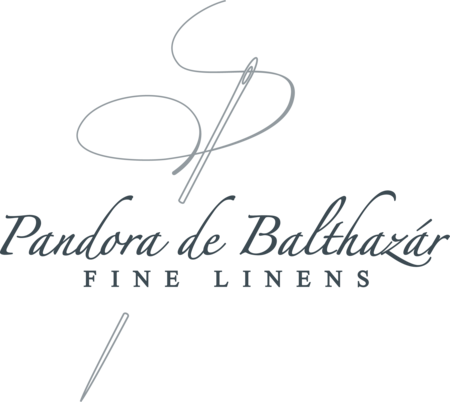This 38" x 38" white tablecloth with scalloped edges, circa 1880, is very rare. The Buzsak handwork creating the luxurious detailing is historically significant to Hungary.
Rare White Buzsak Tablecloth
We at Pandora de Balthazár know the sophisticated table requires sumptuous elements befitting the most fabulous fête and we have so many gorgeous items in our extensive collection. If you see something here that tells you you've landed in the lap of luxury but you may want a different color or size, please contact us because we have far more antiques and vintage pieces than we can put online.
See Our Antique Textiles in Person
This is but one of many luxurious one-of-a-kind antiques we have in our Pensacola atelier, as we have row upon row of textiles that include everything from antique French heirloom linens and primitive Austro-Hungarian Empire textiles to Art Deco and Bohemian specimens—at last count two million one-of-a-kind linens of the finest quality.
If you see a beautiful specimen on this site that you would like to see in person and you cannot visit us but you are a regular at either Round Top or the High Point Market, we will happily bring it to one of these shows so you can see for yourself how remarkable it is. See our Calendar of Events page for fair dates and let us know if we can bring our sumptuousness to you.
Buzsak Handwork
If you’ve never heard of Buzsak, you are in good company, as this style of handwork is not as well-known as we believe it should be. It hails from the village of Buzsak, Hungary, where embroidery is called Kézimunka, or handwork in its most literal translation. Not just a way to bring fabulous style to home décor, Buzsak is also used in fashion. One of its most famous advocates was Mariska Karasz, who created designs during the 1920s and 1930s using this technique.
We leave you today with this quote by the Hungarian-born designer who moved to the United States in the early 20
th century. She learned to work with textiles as a young girl in her native country, fabrics and threads remaining integral to her careers as fashion designer and artist in New York throughout her life: “By and large, embroidery has become just that: handwork…done with the hand, but not with the heart; worked without thought or emotion. And this should not be so, for the beauty of fabrics and fiber, their thinness or thickness, smoothness or coarseness; those endless varieties of color in harmony or dissonance deserve to be brought together with more than just the work of the hand. The relating of background to thread and stitches can become not just an exercise in manual skill, but an exciting expression in texture; an expression of mind, emotion and inner joy…” As we source priceless and museum-quality antiques, as well as affordable vintage textiles, this visionary’s heartfelt expression rings very true for us!
